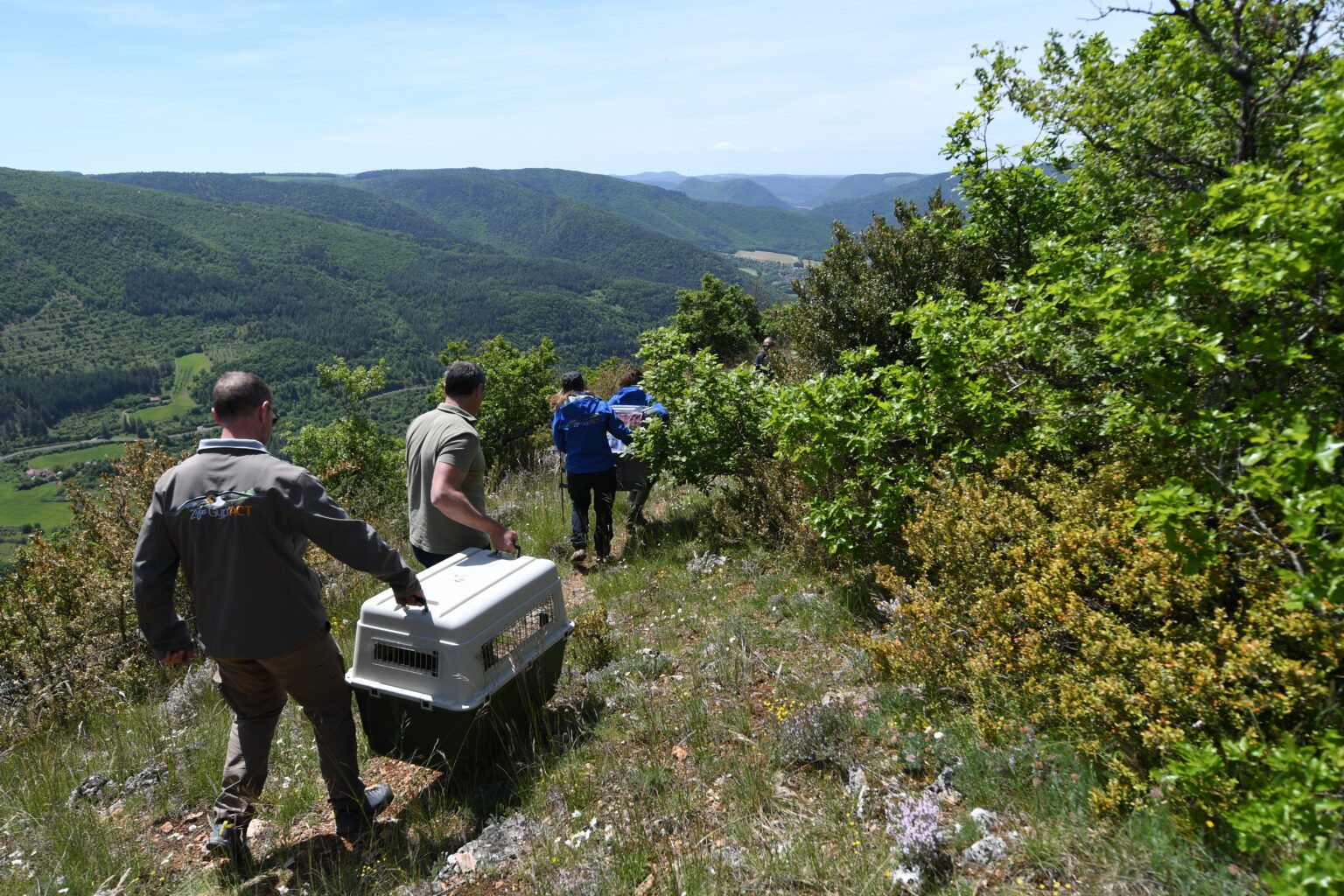
Encouraging news from Morocco, as new Griffon Vultures (Gyps fulvus) pairs coming from Spain recently settled in the vicinity of the Strait of Gibraltar. After two failed breeding attempts in 2021 and 2022, two females are now incubating in the Jbel Moussa Protected Area. Is the Spanish population trying to get a foothold in northernmost Morocco?
New pairs from Spain established in Jbel Moussa Protected Area
Griffon Vultures are breeding again this year in Morocco. The news was shared by AMPOVIS (the Morrocan Association for the Protection of Birds and Wildlife), whose technicians have been attentively following the movements of the new pairs established in the Jbel Moussa Protected Area.
The first pair settled in January 2023 and the second 2 weeks later. They have been seen copulating and are now incubating, which indicates that the females have successfully laid their eggs. The small colony is also made up of several immature birds, and the local team is positive that some new pairs will be formed in the coming weeks.
How is this year different from the breeding attempts in 2021 and 2022?
In 2021 and 2022, Griffon Vultures pairs made attempts to breed but were unsuccessful, possibly due to human disturbance. Back then, the birds that settled in Jbel Moussa were released, thanks to a reintroduction project that was ongoing, which aimed to re-establish the Griffon Vulture breeding guild.
This year, however, the females that are incubating in the amazing Jbel Moussa Protected Area were not reintroduced! In one of the females, it is possible to observe a ring and wing tag, indicating the bird fledged in Spain. This is a fantastic turning point: it is the first natural expansion from the Spanish population and, possibly, the beginning of the recolonisation of the species in Northern Africa.
Could the Griffon Vulture make a comeback after 40 years?
The Jbel Moussa Protected Area is an important ecological corridor for thousands of vultures that cross the Strait of Gibraltar twice a year, on their natural migratory routes between Europe and Africa. However, there are no records of a breeding colony there since the 1980s. Human-related threats, such as poisoning and hunting, are probably the main causes for their disappearance, as reported by the Vulture Multi-Species Action Plan (Vulture MSAP), co-developed by us at the Vulture Conservation Foundation (VCF) and endorsed by the Convention on Migratory Species (CMS).
Since 2020, the Moroccan National Agency for Water and Forests and the regional GREPOM/Birdlife Morocco are working together to bring back a breeding colony, with the reintroduction of several Griffon Vultures in 2021 that were found in distress during migration and rehabilitated in specialised facilities. Once recovered, they were transferred to the Jbel Moussa Rehabilitation Centre, to get acclimatised to their future home. The conservation programme also included the creation of feeding stations, to improve food availability, and awareness-raising campaigns to educate the public about the importance of protecting wildlife.
The importance of this breeding colony
Historically, Morocco was home to five different vulture species breeding. Nowadays, only the Bearded Vulture (Gypaetus barbatus) and the Egyptian Vulture (Neophron pecnopterus) still breed, in the Middle and Upper Atlas regions.
In recent years, a higher number of Griffon Vultures started visiting Morocco thanks to the recovery of the species in Europe, particularly in Spain, which is currently home to around 90% of the European population, with 30.100-36.000 breeding pairs estimated according to the latest Report on population estimates for the five European vulture species, published by the VCF in 2022.
We hope this year the breeding pairs can fledge new hatchlings in the wild! Fingers crossed!



